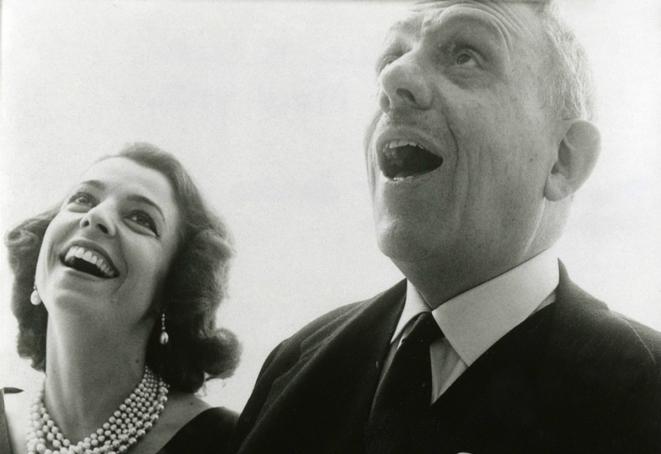It’s safe to assume that mischievous Monsieur Poulenc would have been delighted by the juxtaposition of his joyous slice of Surrealism with Fauré’s serene masterpiece the Requiem. What his elder compatriot might have had to say is harder to imagine. Since Les Mamelles de Tirésias was conceived for the opera house and the Requiem for a place of worship they don’t even belong in the same building – and neither of them by rights in a concert hall – so to call them an odd match would be an understatement. The only obvious link between them is thematic rather than musical: the former celebrates hatch (40,049 births in a single night) while the latter sanctifies despatch.
There could be another connection, albeit one best taken with un soupçon de sel, for the composer reportedly said of Les Mamelles “Stick a Latin text onto the music and it would make a perfectly acceptable oratorio”. Oh, puckish Poulenc. Yet it’s partially true, since there are one or two startling pre-echoes of the opera he would write a decade later, Dialogues des Carmélites (a new production of which opens at the Royal Opera House later this week). More often, though, the resonances are Montparnassian rather than monastic: a fragmentary cavalcade of waltzes, polkas and boulevard chansons.
 Proto-feminist Thérèse (Hélène Guilmette) casts off her unwanted breasts, grows a beard and assumes the name Tirésias. While she goes off to become a man her husband (Jean-François Lapointe) assumes the female role and proves his credentials by giving birth to the aforesaid impressive clutch in a single night. After that the plot gets a bit silly.
Proto-feminist Thérèse (Hélène Guilmette) casts off her unwanted breasts, grows a beard and assumes the name Tirésias. While she goes off to become a man her husband (Jean-François Lapointe) assumes the female role and proves his credentials by giving birth to the aforesaid impressive clutch in a single night. After that the plot gets a bit silly.
The sledgehammer Surrealism of Guillaume Apollinaire’s 1917 play would quickly grow wearisome today were it not for the quicksilver zest of Poulenc’s hour-long opera. That energy was well served by the solo singers and BBC forces in Ludovic Morlot’s aerated performance (the conductor pictured, photo by Sussie Ahlburg), while Kenneth Richardson’s semi-staging managed to be witty yet self-effacing and allowed the good-natured score to take centre stage. There were just enough throwaway sight gags (including a boob-bursting conductor’s baton) to unleash the audience’s inhibitions, and the BBC Singers had great fun impersonating a delivery room full of precocious sprogs.
Jean-Paul Fouchécourt and Ivan Ludlow contributed a show-stealing double-act as Presto and Lacouf, two sweetly irrelevant interlopers, and Lapointe backed up his elastic vocal contributions with an array of sardonic facial responses; but it was Guilmette who carried all before her in a role whose difficulty caused Poulenc to delay the original production for two years because he was unable to cast it. Thérèse has to be Tosca and Barbara rolled into one, and blest with funny bones. The French-Canadian soprano had the lot – plus a lovely pair of pink balloons.
Morlot used Fauré’s full orchestration less to upholster the Requiem than to refine it
Earlier on, though, her sweetly-sung "Pie Jesu" had been a puzzle. Why the extra "e" in "Reequiem"? And Lapointe’s forthright timbre hardly made him the dream baritone for Fauré’s "Hostias" either. But Morlot covered himself in liturgical glory with a carefully-considered reading that held many incidental beauties. He used Fauré’s full orchestration less to upholster the Requiem than to refine it: for most of its duration he kept such a tight leash on his players that their sound appeared to emerge from within the choral texture itself – like light from a stained glass window. On the occasions when the quartet of BBCSO horns did cut through the placid mood, their intrusion upon the finely-blended singing of the BBC Symphony Chorus almost came as a shock.
If in Fauré’s closing movement the young Lyonnais conductor rushed us towards Paradise with unseemly haste, at least he’d given us a glimpse of what to expect when we get there.















Add comment